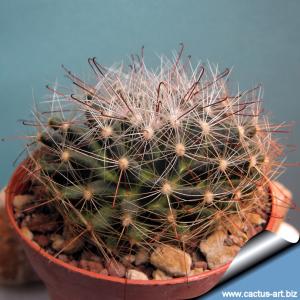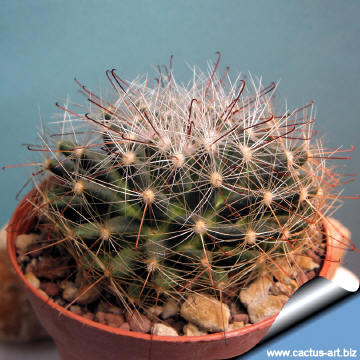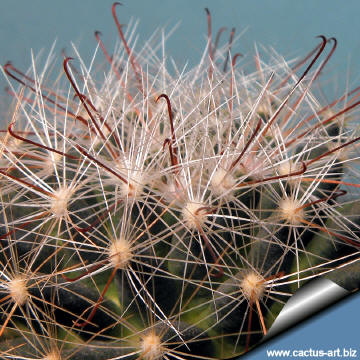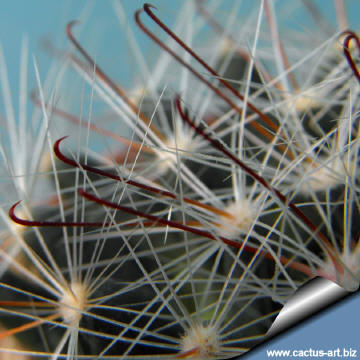-
x
Description
Nice species with soft flattened stems. If grown correctly, it will recompense the grower with generous displays of large and showy flowers. Family: Cactaceae (Cactus Family) Scientific name: Mammillaria zephyranthoides Scheidw. Habitat: Mattoral xerofilo and Pastizal. Grows often under bushes scrub on plains and gravely hills. Altitude 1800-2400 m. Conservation status: Listed in CITES appendix 2.
Etymology: The species name zephyranthoides comes from the Greek suffix “oides”, resembling, similar to; and for the genus Zephyranthes (fam. Armarillidaceae). For the similar looking large flowers.
| |
| Description: Usually solitary | |
| Cultivation: Very easy to grow. Watering Needs: It needs regular water, but do not water again until dry. Also, it is a species that is dormant in the winter and requires very little water (maybe even none) during the cold months. Frost Tolerance: Light frost protection required. Minimum of 5º C for safe growing (but hardy down to -8°C or less.). Sun Exposure: In spite of its preference for shade in the wild, in culture, good exposure to sunshine will favour good spine development. It can get sunburned if moved from shade/greenhouse into full sun too quickly. During the spring it may be able to take full sun until the heat arrives at the end of spring. In an area that has hot afternoon sun, it may be able to take full morning sun, but requires afternoon shade or afternoon light shade. If grown correctly, it will reward the grower with generous displays of yellow flowers. Clumps will be formed quite readily over a few years. Spider mites are especially attracted to this species, but often are controlled with overhead watering. Care with repotting is needed, as the thick taproot is easily damaged. Propagation: Seeds or offsets that appear at the base; leave them attached to form a cluster, or wait until they are 1/3 the size of the parent and then detach and plant. | |


 Mammillaria zephyranthoides
Mammillaria zephyranthoides 


